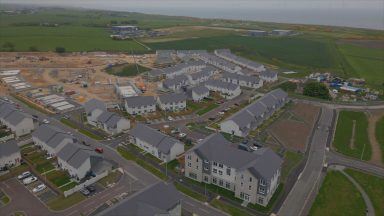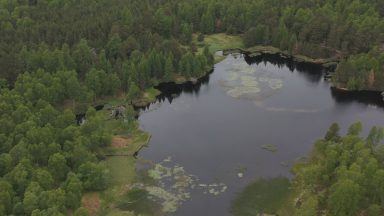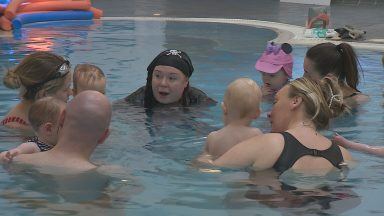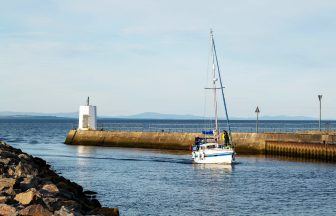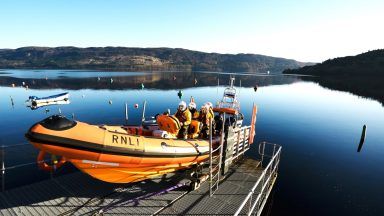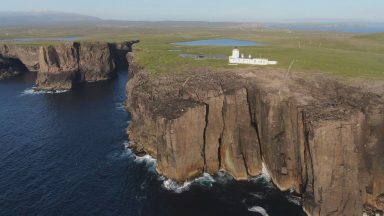Looking out towards the sea on the north coast of Scotland lies the small village of Golspie.
It’s popular with tourists who are drawn to its stunning scenery and proximity to the North Coast 500, as well being home to a population of around 1,300 people. However, despite its idyllic setting, Golspie is in survival mode.
The village is classed as one of the areas of Scotland most vulnerable to the impact of coastal erosion.
Changing weather patterns and rising sea levels mean that around 100 homes on Golspie’s promenade are at imminent risk of flooding – a problem the community have been tirelessly demanding action on for over a decade.
Signs for the Golspie Flood Action group can be spotted immediately upon driving into the village. The group was set up in response to a particularly treacherous series of storms in 2012.
The group’s leader, Henrietta Marriott, has described Golspie as a “prisoner of its geography”, which is “trapped” between the sea and the hilltop of Ben Bhraggie.
“We’ve lost metres of shoreline,” she told Scotland Tonight. “The old, original golf clubhouse is now probably 30 metres out to sea, and the caravan park and the cart track further down are within inches of being taken by the sea.”
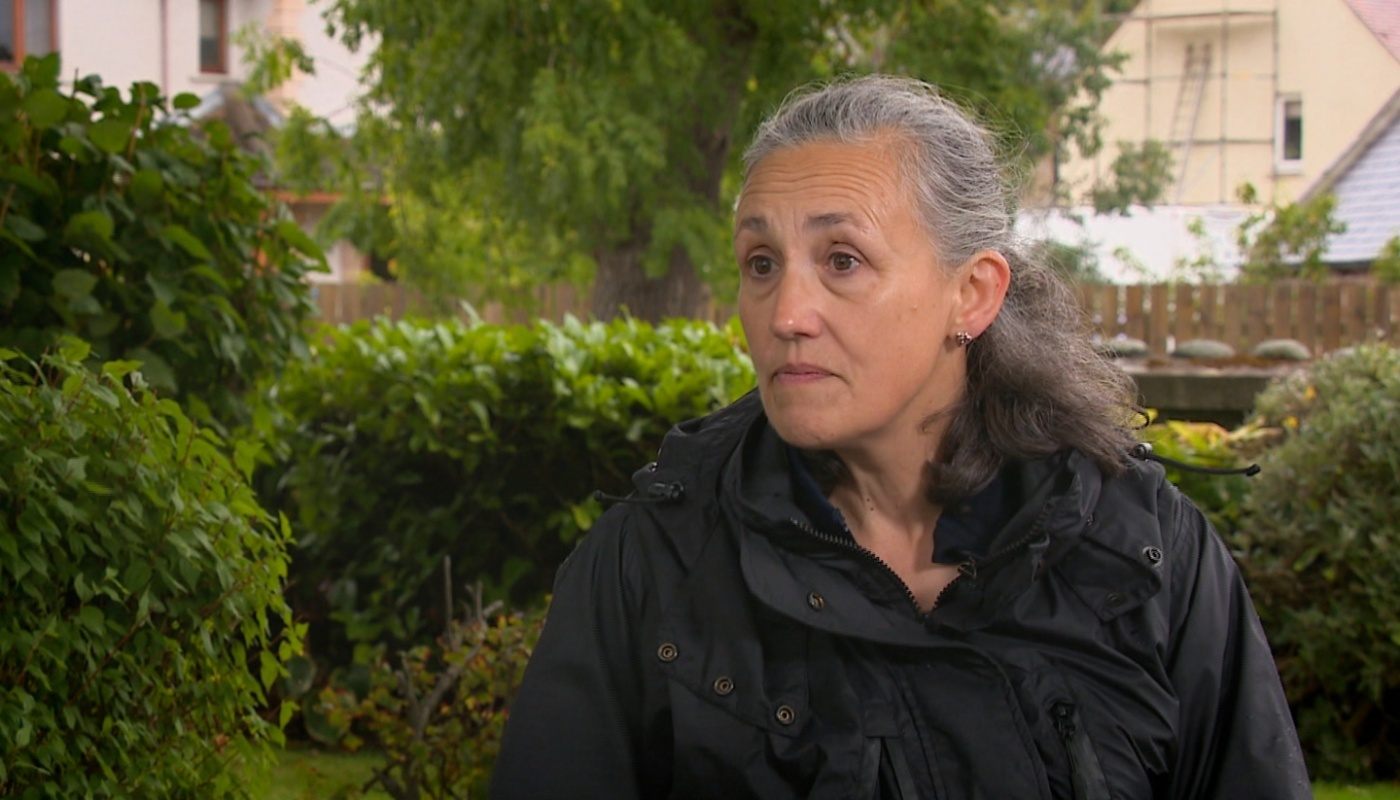 STV News
STV NewsStorms ripped through the area in February this year, forcing waves to crash over the sea defences and flooding homes and businesses.
Sections of the walkway next to the shoreline eroded and crumbled in the water while tonnes of debris destroyed the railings.
Currently, the main defence protecting Golspie from flooding is a four metre sea wall. However, the structure is 70-years-old and little has been upgraded since it was first built.
Resident Ian Melville, a former fisherman, has resorted to buying his own sandbags in an attempt to protect his seafront property.
He said: “We’re seeing much more intense storms, creating these storm surges out in the bay. By the time the waves come in here, they have increased in height and ferocity. The damage is quite incredulous.”
 STV News
STV NewsIan believes “a lot of mistakes have been made here”, describing the current situation for the community as “dreadful”.
That is a feeling shared by the North of Scotland Kart Club, who currently face a future of uncertainty.
Built almost 50 years ago, the site is the most northern track in the country with 160 members. It’s a popular attraction for locals and tourists alike and has been graced by F1 stars like David Coulthard and Susie Wolff.
However, in the last 30 years the track has lost over three quarters of the sea bank section leaving its future in serious jeopardy.
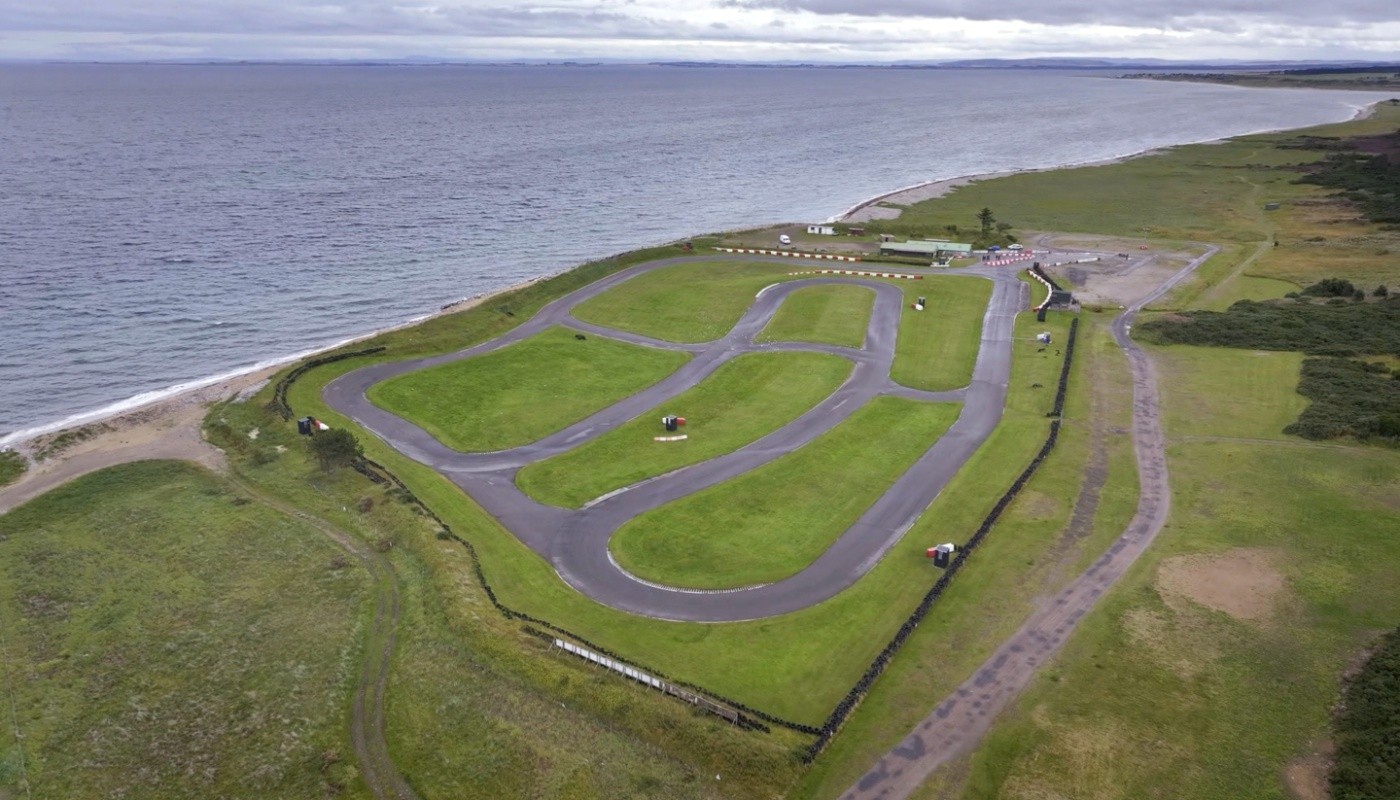 STV News
STV NewsGordon Mackay, the club chairman, said: “30 years ago, you could park two coaches long ways, and now [there is] four to six foot left.”
The club has spent around £200,000 on rock armour over the last decade to try to curb the impact of the waves, but says the true cost coming their way in the future will be far greater.
“We do events that try and raise more money, we do raffles,” said Kenne MacKenzie, the club announcer. “But even our race meetings – some of them are just covering their costs. So unless we make profits on each race meeting, you know, we’re not even making the money to go back into the coastal erosion problem.”
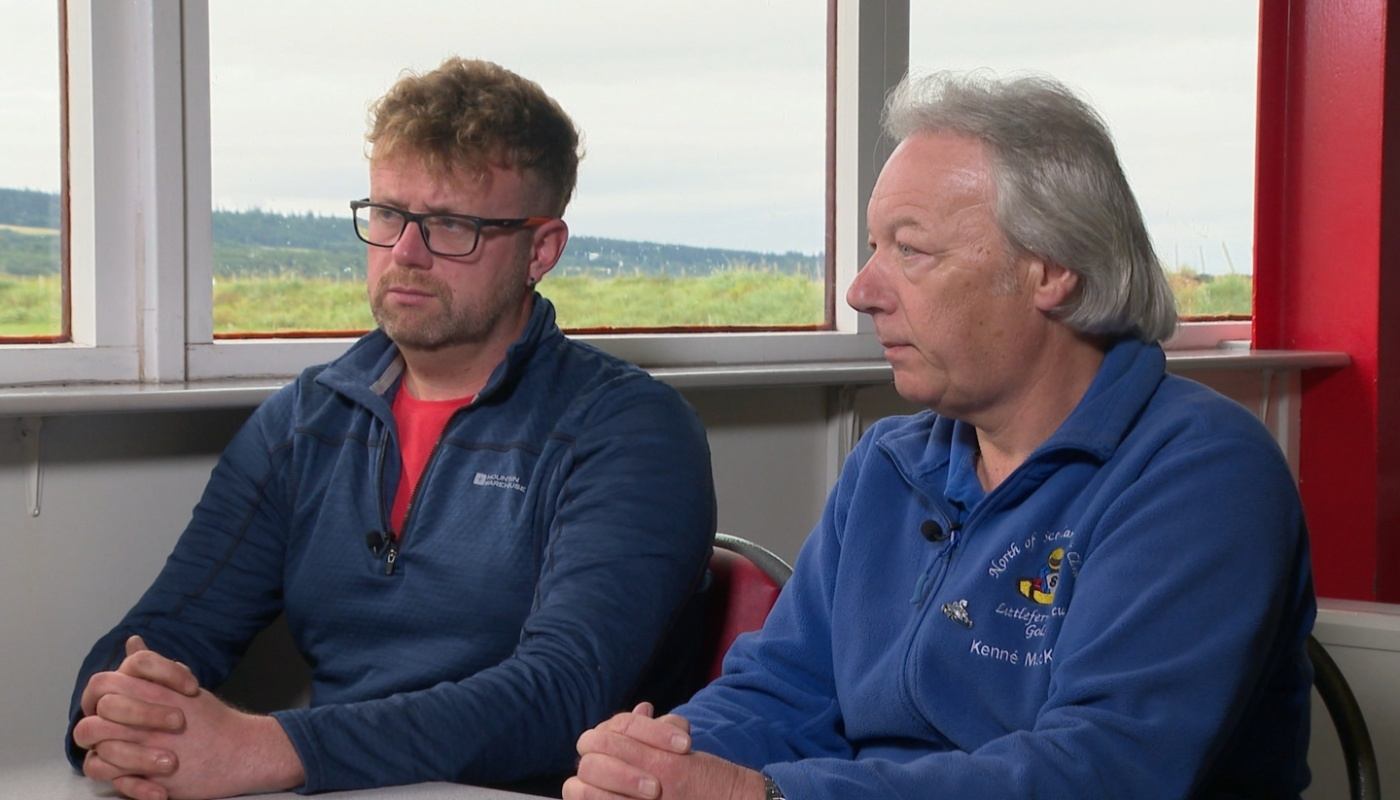 STV News
STV NewsGordon added: “The problem is we don’t know how much we can spend each year. One year, maybe £50,000. It all depends on the swell and the wind direction of the North Sea.
“Next year, we could be £100,000, which we can’t do. So it’s ongoing – tomorrow could be totally different.”
And while businesses battle the financial burden of the damage, others have had their quality of life curbed by the crisis.
Resident Kate Kirk is disabled and moved to Golspie two years ago to be near the beach.
Cold water swimming helps with her pain but her access to the beach has been blocked after storms destroyed the ramp.
 STV News
STV News“You know,” she said. “To come down in the morning and see what had happened…it was heartbreaking. It really was.
“And I think the worry of course, is the future. It’s not, it’s not going to get any better.”
She added: “I know it affects everybody, but it affects me as a disabled person, not being able to…other people can climb over the rocks, I can’t.”
A national issue
The Golspie community find themselves at the sharp end of the problem, but coastal erosion is a looming crisis Scotland-wide.
Coastlines around the country are eroding at a rapid rate, with around 400,000 homes across Scotland predicted to be affected by rising sea levels over the next 50 years.
If action isn’t taken fast, much of the land around areas like Golspie could be underwater within this century.
The Flood Action Group has suggested raising the existing sea wall, and creating a structure similar to a dyke to reduce the force of the waves.
However, despite repeated pleas to Highland Council, funding has not yet arrived.
In 2019, the Scottish Government opened a round of funding for local authorities to apply to protect their coastal areas. The Highland Council application for Golspie was rejected.
There is, however, now a second funding cycle open, and the community are currently waiting to see whether this application will be successful.
The leader of flood management at Highland Council, Alan Fraser, suggests that bolstering the existing flood defences is the preferred option for the village.
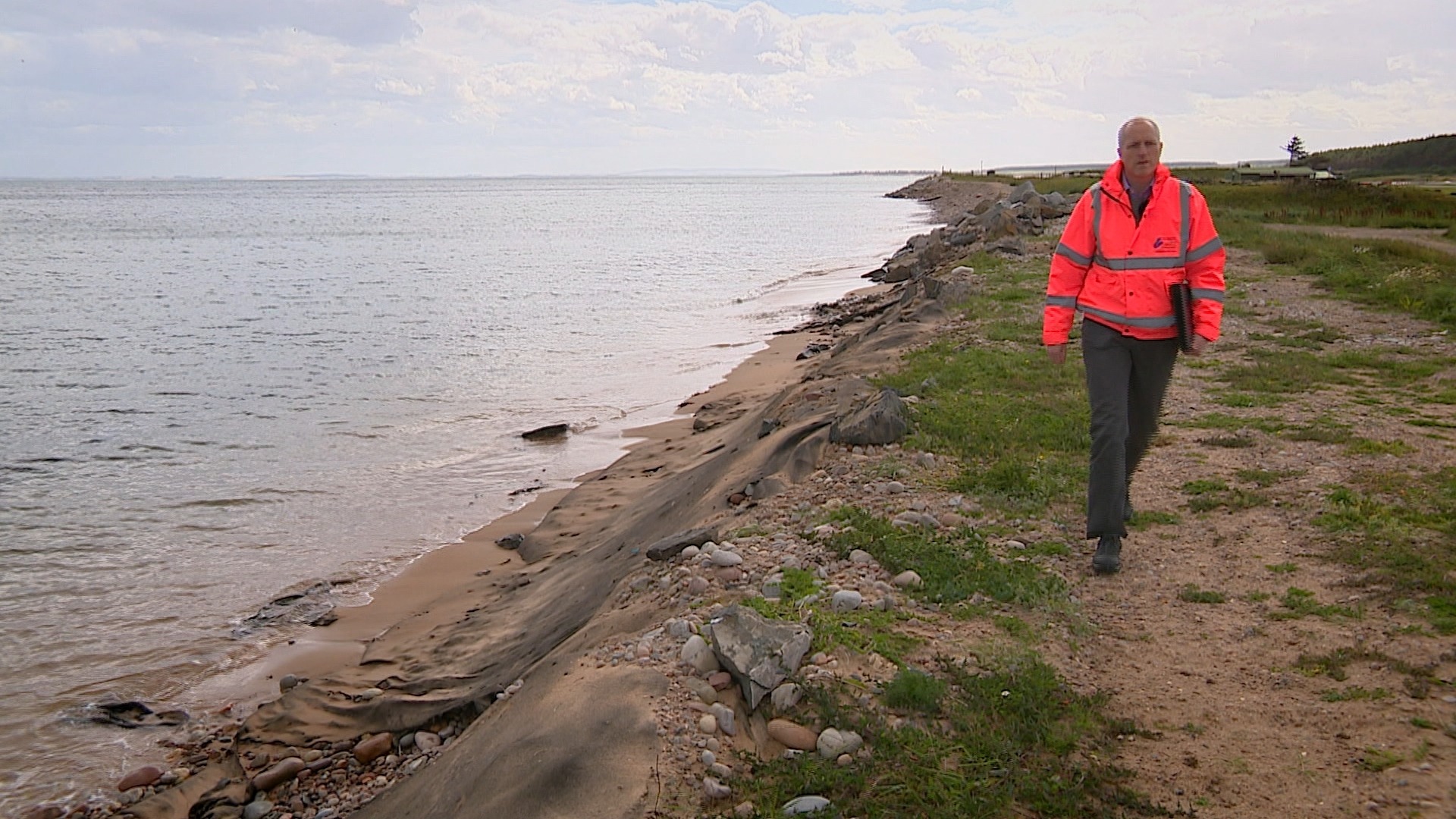 STV News
STV NewsHe told Scotland Tonight that Golspie is “one of the areas that we think nationally is probably fairly high on the priority list”.
However, he added: “Whether or not it’s high enough to receive the funding, we will have to wait and see for the Scottish Government decision.”
In response to funding pressures, Mr Fraser said: “Funding for local authorities for all types of measures are tight and we have to compete with new schools or improved road conditions or any other infrastructure needs that the council has.”
A Scottish Government spokesperson told Scotland Tonight that Golspie is recognised as one of the country’s coastal communities seeing increased climate change effects.
A spokesperson stated: “In order to start adapting our coasts to better respond to sea level rise and reduce the associated risks, the Scottish Government is providing £12m of funding for local authorities, including Highland Council, to develop Coastal Change Adaptation Plans.
“In addition we are investing £42m per year, and an additional £150m over the course of this Parliament, to improve flood resilience across Scottish communities.
“A proposed flood protection scheme for Golspie is part of considerations for the next cycle of schemes, and a joint Scottish Government and COSLA group is working to progress this. In the meantime we will continue to engage with the local community.
“We also intend to publish our national Flood Resilience Strategy by the end of the year.”
“Uncharted territory”
For now, those in Golspie and others up and down Scotland’s coastline can only keep pushing for more support – but they’re running out of time.
“We are in uncharted territory in terms of climate change,” said Henrietta. “If the worst case scenario comes to pass and the figures are not going in the right direction at the moment, in 100 years time, this village could have to move. Completely.”
She added: “90% of the world’s population lives within ten miles of the coast.
“So this is not a Golspie-particular problem. Sea levels are rising and if we can act now, we will save ourselves a whole world of pain and money in the future.”
Watch the full report, Scotland Tonight: Changing Coastlines, on Thursday at 8:30pm on STV and the STV Player
Follow STV News on WhatsApp
Scan the QR code on your mobile device for all the latest news from around the country








